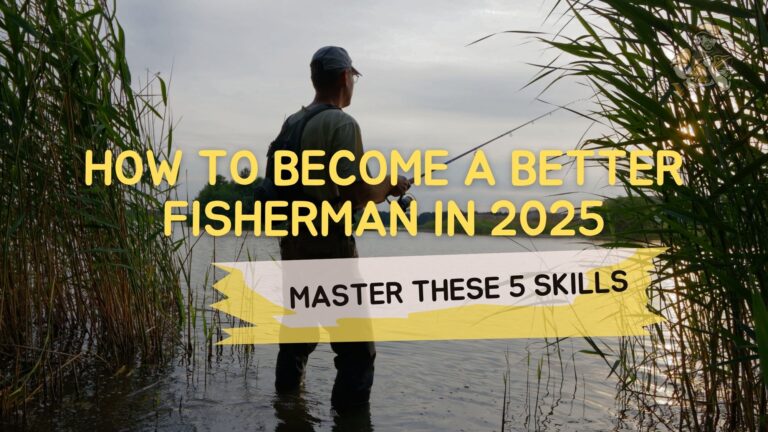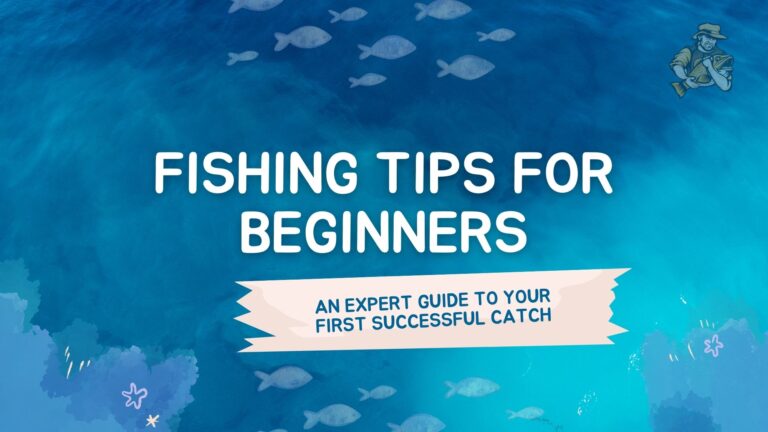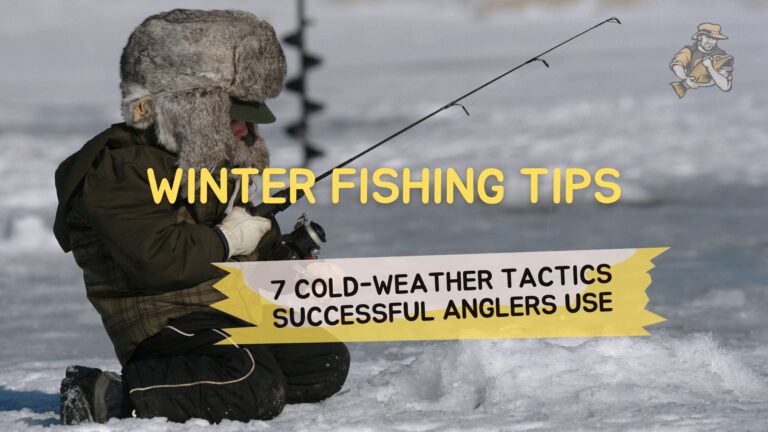Atlantic Salmon: Ultimate Guide for Anglers in 2025
By Adam Hawthorne | Last Modified: April 26, 2025

For as long as I can remember, I’ve been captivated by Atlantic salmon fishing. There’s something almost mystical about these magnificent fish – their power, their beauty, and the challenge they present to even the most seasoned angler. After three decades on the water, I’m still learning something new with every Atlantic salmon expedition.
What Makes Atlantic Salmon Fishing Special
Atlantic salmon (Salmo salar) aren’t just any fish – they’re often called the “king of fish” for good reason. Unlike their Pacific cousins, Atlantic salmon can spawn multiple times during their lifetime, making them truly remarkable creatures. These anadromous fish are born in freshwater, migrate to the ocean, and then return to their natal rivers to spawn.
I first encountered Atlantic salmon on a bitter cold morning in Maine’s Penobscot River. I’d been fishing for hours without so much as a nibble when suddenly my line went tight. What followed was a battle I still recall vividly – twenty minutes of give and take with a magnificent 15-pound hen that eventually broke free near the bank. That fish taught me more in twenty minutes than I’d learned in years of reading about salmon fishing techniques.
Most Atlantic salmon fishing revolves around their spawning runs, when these fish return from the ocean to the rivers where they were born. This incredible journey – sometimes spanning thousands of miles – creates a limited but intense fishing season that varies by location.
According to research from the Atlantic Salmon Federation, Atlantic salmon populations have declined significantly over the last century due to various environmental pressures, making conservation efforts increasingly important for these magnificent fish.
Atlantic Salmon vs. Pacific Salmon: Key Differences
Before diving deeper, it’s helpful to understand how Atlantic salmon differ from Pacific species. While they might look similar at first glance, there are crucial differences that affect how you’ll fish for them.
| Characteristic | Atlantic Salmon | Pacific Salmon |
|---|---|---|
| Scientific Name | Salmo salar | Oncorhynchus species |
| Spawning | Multiple times | Once only (die after spawning) |
| Average Size | 8-12 lbs (occasionally 30+ lbs) | Varies by species (3-50+ lbs) |
| Distribution | North Atlantic rivers | North Pacific rivers |
| Current Status | Many populations threatened | Varies by species and region |
| Preferred Techniques | Fly fishing dominates | Variety of methods widely used |
This distinction matters because Atlantic salmon require different approaches compared to Pacific salmon like Chinook or Coho. I learned this the hard way when I first tried Atlantic salmon fishing using techniques that had worked for me with Pacific species – it was a humbling experience with an empty net to show for it.
Where to Find Atlantic Salmon in 2025
The Atlantic salmon’s historical range spans both sides of the North Atlantic Ocean. Native populations once thrived from Connecticut to Labrador in North America and from Portugal to Norway in Europe. Today, the best opportunities for wild Atlantic salmon fishing are more limited.
North American Hotspots
- Miramichi River, New Brunswick
The Miramichi system remains one of North America’s premier Atlantic salmon fisheries. Last September, I spent a week here with some fishing buddies, and while conditions weren’t ideal – unusually warm water had the salmon holding in deeper pools – we still connected with several beautiful fish in the 8-12 pound range. - Restigouche River, New Brunswick/Quebec Border
This legendary river produces some of the largest Atlantic salmon in North America. Access can be challenging as much of the prime water is controlled by private clubs, but public access points do exist. - Gaspé Peninsula Rivers, Quebec
The rivers of Quebec’s Gaspé Peninsula – the Cascapedia, Bonaventure, and Grand River – offer world-class Atlantic salmon fishing. The Bonaventure’s crystal-clear waters provide some of the most visual salmon fishing you’ll ever experience. - Newfoundland Rivers
I’ve fished several of Newfoundland’s productive rivers, including the Humber and the Exploits. These rivers host smaller “grilse” (salmon that return after just one year at sea) but can provide exceptional action. My trip to the Humber three years ago coincided with a strong run of 5-7 pound fish that eagerly took dry flies – a memory I’ll treasure forever.
The Fisheries and Oceans Canada provides updated information on river conditions and regulations, which is essential reading before planning any Canadian Atlantic salmon trip.
European Destinations
- Norwegian Rivers
Norway remains the crown jewel of European Atlantic salmon fishing. Rivers like the Gaula, Alta, and Orkla produce monster salmon, though access to prime beats comes at a premium price. - Scottish Rivers
The Spey, Tay, Dee, and Tweed are legendary Scottish salmon rivers with centuries of angling tradition. These rivers tend to feature highly structured fishing with beats and ghillies (guides). - Iceland
Icelandic rivers like the Laxá are known for their clarity and healthy salmon runs. These rivers typically offer exclusive access through lodge packages. - Russia’s Kola Peninsula
Remote rivers like the Ponoi offer adventurous anglers a chance at trophy Atlantic salmon in pristine wilderness settings.
For European destinations, organizations like the North Atlantic Salmon Fund track river conditions and offer conservation updates that can help plan your trip.
Seasonal Timing for Atlantic Salmon
Timing is everything with Atlantic salmon. Unlike bass or trout that you can target year-round in many locations, salmon runs occur during specific windows that vary by watershed.
In my experience – and I’ve made the mistake of showing up at the wrong time more than once – it’s crucial to research the specific river you’re planning to fish. Some general patterns do exist:
- Spring (May-June): Early-season “bright” salmon begin entering larger river systems. These fish are fresh from the ocean and generally considered the best fighters and table fare.
- Summer (July-August): The main runs occur in most rivers, with fish distribution spreading throughout the watersheds. This is typically prime time for most Atlantic salmon rivers, though water temperatures can become an issue during heat waves.
- Fall (September-October): Later runs continue in some systems, and salmon begin preparing for spawning. While these fish may be less chrome-bright, they can still provide excellent sport.
I once planned a trip to eastern Canada in early May, assuming the timing would be perfect for the early run. What I didn’t account for was that year’s exceptionally cold spring – the river was high, cold, and largely devoid of salmon. The locals had a good laugh at my expense, explaining that the run typically didn’t start until early June most years. Lesson learned.
Essential Gear for Atlantic Salmon Fishing
After trying just about every rod, reel and fly combination imaginable over the years, I’ve settled on what I consider the optimal Atlantic salmon setup. That said, I always emphasize that you don’t need to break the bank to get started.
Fly Fishing Gear (Most Common Method)
- Rods: 9-10 foot, 7-9 weight single-handed rods for smaller rivers; 12-15 foot spey or switch rods for larger waters. My workhorse is a 13’6″ 8-weight switch rod that handles everything from small Newfoundland streams to the broader reaches of the Miramichi.
- Reels: Large arbor reels with smooth drags are essential. Atlantic salmon can make blistering runs, and your reel needs to keep up. After losing a monster salmon when my drag seized up, I invested in a quality machined aluminum reel and never looked back.
- Lines: Floating lines for most situations, with sink tips for higher water. When fishing the Restigouche during a high-water event in 2020, I was thankful for the assortment of sink tips I’d packed.
- Leaders: 9-12 foot tapered leaders, typically ending in 10-12 pound tippet.
According to Trout and Salmon magazine, modern spey casting techniques have revolutionized Atlantic salmon fishing, allowing anglers to cover more water efficiently.
Budget-Friendly Options
You don’t need to spend thousands to enjoy Atlantic salmon fishing. My first setup was decidedly modest – a used 9-weight rod, basic reel, and floating line that cost me less than $200 total. I caught my first Atlantic salmon on that very outfit.
- Rods: Entry-level options from Echo, Redington, or Orvis start around $200-300
- Reels: Basic models from Lamson or Orvis ($150-200) will handle most salmon
- Lines: Rio and Scientific Anglers offer quality salmon-specific lines (~$80)
For beginners looking to test the waters before investing heavily, I recommend starting with a 9-foot 8-weight single-handed rod setup. It’s versatile enough for most situations and won’t break the bank.
Atlantic Salmon Flies: Traditional vs. Modern
I keep two fly boxes for Atlantic salmon: one filled with classic patterns that have worked for centuries, and another with modern innovations that can sometimes outperform tradition. There’s something deeply satisfying about catching a salmon on a fly pattern that’s remained virtually unchanged for 150 years.
Classic Patterns That Still Work
- Green Machine: This Canadian pattern has probably accounted for more Atlantic salmon than any other fly in the past few decades.
- Blue Charm: A traditional Scottish pattern that remains deadly effective.
- Silver Doctor: Another classic that continues to produce.
- Jock Scott: Perhaps the most famous salmon fly of all time.
Modern Effective Patterns
- Sunray Shadow: This long, slim pattern creates an irresistible profile in the water.
- GP: A simple but effective pattern developed in Quebec.
- Thunder and Lightning: A contemporary pattern that shines in low light.
For an excellent resource on fly selection, check out the Atlantic Salmon Fly International website, which catalogs hundreds of proven patterns.
I recall a frustrating day on New Brunswick’s Southwest Miramichi when nothing seemed to work. After cycling through dozens of patterns, I tied on a tiny #14 Blue Charm – a fly almost comically small for Atlantic salmon. Within minutes, I hooked and landed a bright 10-pound hen. The lesson? Sometimes tradition trumps innovation.
Essential Techniques for Atlantic Salmon Success
Atlantic salmon fishing requires techniques that differ substantially from those used for other species. Perhaps the biggest adjustment for many anglers is understanding that Atlantic salmon don’t actively feed in freshwater.
The Swing’s the Thing
The traditional down-and-across swing remains the most popular and effective method for presenting flies to Atlantic salmon. The basic approach:
- Cast across and slightly downstream
- Mend your line to control the swing speed
- Let the current carry your fly across the river
- Follow the swing with your rod tip
- Hang the fly momentarily at the end of the swing
- Take a step downstream and repeat
During a trip to the Margaree River in Nova Scotia, I watched an older gentleman outfish everyone else by methodically covering water with precise casts and perfectly controlled swings. When I asked about his secret, he simply said, “Patience and presentation – salmon lies are smaller than most folks think.”
The Riffling Hitch
This technique, developed in Newfoundland, creates a wake behind your fly that can trigger aggressive responses. By tying a simple hitch knot in front of the fly, you cause it to skate across the surface – sometimes triggering explosive takes.
The Sink and Strip
In higher water conditions, getting your fly down to the salmon’s level becomes critical. Using sink tips and stripped retrieves can be highly effective when standard swings aren’t producing.
According to research published in the Journal of Fish Biology, salmon in rivers respond more to the motion and profile of flies rather than their specific color or pattern, especially in colored water conditions.
Reading Atlantic Salmon Water
Learning to identify prime Atlantic salmon holding water took me years to master, but there are some general principles that will help you locate fish consistently.
Atlantic salmon typically hold in specific types of water:
- Tail-outs: The downstream end of pools where the water begins to shallow and speed up
- Mid-pool seams: Where currents of different speeds meet in the middle sections of pools
- Pocket water: Protected areas behind boulders or other structure
- Heads of pools: Where faster water enters deeper pools
During my first Atlantic salmon trip, I exhausted myself casting to every inch of water. A kindly guide eventually took pity and showed me how to identify the subtle depressions, current seams, and transitional areas where salmon typically hold. My catch rate immediately improved.
The Wild Salmon Center offers excellent resources on salmon habitat and behavior that can help develop your river reading skills.
Atlantic Salmon Conservation and Ethics
As an angler who’s witnessed the decline of Atlantic salmon populations firsthand, I feel obligated to emphasize conservation. When I first started fishing for these magnificent creatures in the early 1990s, many rivers had robust runs. Today, the situation is considerably more concerning.
Proper Catch and Release Practices
Most Atlantic salmon waters now operate under catch-and-release regulations. To ensure the survival of released fish:
- Use single, barbless hooks
- Keep fish in the water whenever possible
- Support the fish properly when handling
- Minimize handling time
- Revive fish thoroughly before release
I once watched in horror as a novice angler dragged a beautiful salmon onto rocky shore, fumbled with it for photos, then casually tossed it back. That experience prompted me to start carrying a rubber landing net and to always take time educating newcomers about proper fish handling.
Conservation Organizations Worth Supporting
Several organizations are doing critical work to preserve Atlantic salmon:
- Atlantic Salmon Federation
- North Atlantic Salmon Fund
- Salmon and Trout Conservation
- Wild Salmon Center
A portion of my annual fishing budget always goes to these organizations. After all, I want my grandchildren to have the opportunity to experience the thrill of Atlantic salmon fishing.
Planning Your Atlantic Salmon Trip
After organizing dozens of Atlantic salmon trips (with varying degrees of success), I’ve developed a planning framework that maximizes your chances:
- Research river-specific timing: Don’t rely on general information; contact local outfitters or fisheries biologists for the most current run timing data.
- Book guides for at least your first days: Even if you’re an experienced angler, local knowledge is invaluable. My first guided day on Quebec’s Bonaventure River saved me from wasting the entire week fishing unproductive water.
- Secure accommodations early: Prime salmon fishing locations have limited lodging that books quickly.
- Understand regulations: Atlantic salmon fishing is highly regulated, with season dates, licensing requirements, and techniques varying by jurisdiction.
- Be flexible: Salmon runs are notoriously unpredictable. When possible, build flexibility into your schedule.
Two years ago, I planned a week-long trip to New Brunswick’s Miramichi River. The summer had been dry, and water levels were dangerously low for salmon. Rather than sticking stubbornly to my original plan, I pivoted to smaller tributaries where cooler water temperatures had concentrated the fish. That flexibility saved the trip.
Common Mistakes and How to Avoid Them
Over decades of chasing Atlantic salmon, I’ve made virtually every mistake possible. Learn from my missteps:
- Fishing too fast: Many anglers cover water too quickly. Take your time and make multiple casts to likely holding areas.
- Using tackle that’s too light: While delicate presentations have their place, undersized tackle leads to extended fights that exhaust fish. My rule is to land salmon within 5 minutes whenever possible.
- Ignoring local knowledge: I once dismissed a guide’s fly recommendation on Norway’s Gaula River, convinced my patterns were superior. After a fishless morning, I swallowed my pride, tied on his suggested pattern, and hooked a salmon within an hour.
- Focusing solely on famous pools: While named pools often hold fish, less prestigious water frequently gets overlooked and can produce excellent results.
- Not adjusting to conditions: Atlantic salmon fishing demands constant adaptation to changing water levels, temperatures, and light conditions.
The Norwegian Salmon Rivers website offers excellent guidance on adjusting techniques to various river conditions.
FAQ: Atlantic Salmon Fishing
When is the best time to fish for Atlantic salmon?
Peak timing varies dramatically by river system. Generally, June through August offers the most consistent fishing across North America, while May through July is prime time for most European rivers. However, specific rivers may have prime periods that fall outside these general windows. The International Council for the Exploration of the Sea publishes annual reports on salmon run timing that can help refine your planning.
Do I need a guide for Atlantic salmon fishing?
While not absolutely necessary, hiring a guide – even for just a day or two – dramatically increases your learning curve and chances of success. Atlantic salmon fishing has many subtleties that aren’t obvious to newcomers. My personal rule is to always use a guide for at least my first day on any new salmon river.
What’s the difference between wet fly and dry fly fishing for Atlantic salmon?
Wet fly fishing (subsurface presentations) is the traditional approach and generally more productive across most conditions. Dry fly fishing (surface presentations) is more visual and exciting but typically works best during specific conditions – warm water, summer months, and when salmon are showing themselves by rolling or jumping. According to the Scottish Center for Salmon Research, approximately 85% of Atlantic salmon are caught on wet flies.
Is Atlantic salmon fishing expensive?
It can be, particularly on famous rivers or beats. However, affordable options exist. Public waters in Newfoundland, parts of Quebec, and New Brunswick offer excellent fishing at reasonable prices. My annual Atlantic salmon trips range from bare-bones DIY adventures staying in basic accommodations to occasional splurges at established lodges.
Are wild Atlantic salmon endangered?
Many populations are threatened or endangered, particularly in the southern portions of their range. Wild Atlantic salmon have disappeared from most U.S. rivers south of Maine. Conservation efforts are ongoing, with varying success. The NOAA Fisheries provides updated status information for various salmon populations.
Can beginners catch Atlantic salmon?
Absolutely, though it helps to temper expectations. Atlantic salmon are called “the fish of a thousand casts” for good reason. My first Atlantic salmon came on my third day of fishing – which is actually quite lucky by most standards. Beginners should focus on the experience rather than results and consider hiring a guide to accelerate the learning process.
Final Thoughts on Atlantic Salmon Fishing
After more than three decades chasing these magnificent fish, I still get butterflies in my stomach when I first step into a salmon river. There’s something about the combination of beautiful surroundings, the connection to angling traditions, and the challenge of enticing a fish that isn’t actively feeding that makes Atlantic salmon fishing unique.
Last summer, while fishing Quebec’s Bonaventure River in perfect conditions – gin-clear water, comfortable temperature, light breeze rippling the surface – I watched a bright salmon move six feet sideways to take my gently swinging Blue Charm. In that moment, all the fruitless hours, the long drives, and the early mornings suddenly seemed like a small price to pay.
Whether you’re a seasoned salmon angler or considering your first Atlantic salmon adventure, I hope this guide helps you experience the magic of these incredible fish. Be patient, respect the resource, and enjoy every moment on the water – even those without fish.

Meet Adam Hawthorne
I’m a lifelong fishing enthusiast who’s spent years exploring rivers, lakes, and oceans with a rod in hand. At Fishing Titan, I share hands-on tips, honest gear reviews, and everything I’ve learned about fish and ocean life, so you can fish smarter and enjoy every cast.
Share:

Meet Adam Hawthorne
I’m a lifelong fishing enthusiast who’s spent years exploring rivers, lakes, and oceans with a rod in hand. At Fishing Titan, I share hands-on tips, honest gear reviews, and everything I’ve learned about fish and ocean life, so you can fish smarter and enjoy every cast.
Related Articles

How to Become a Better Fisherman in 2025: Master These 5 Skills
There’s something magical about that moment when your line goes tight and you feel the unmistakable pull of a fish on the other end. Whether…

Fishing Tips for Beginners: An Expert Guide to Your First Successful Catch
Getting started with fishing can feel overwhelming. Trust me, I’ve been there – staring at walls of equipment, trying to decipher fishing jargon, and wondering…

Winter Fishing Tips: 7 Cold-Weather Tactics Successful Anglers Use
Most anglers pack away their gear when the temperature drops, but the dedicated few know something the others don’t: winter fishing can be incredibly rewarding…

Utah Fishing License Guide: Costs, Requirements & Hidden Tips for 2025
When I first planned a fishing trip to Utah’s beautiful waters about a decade ago, figuring out the licensing requirements felt more complicated than actually…
